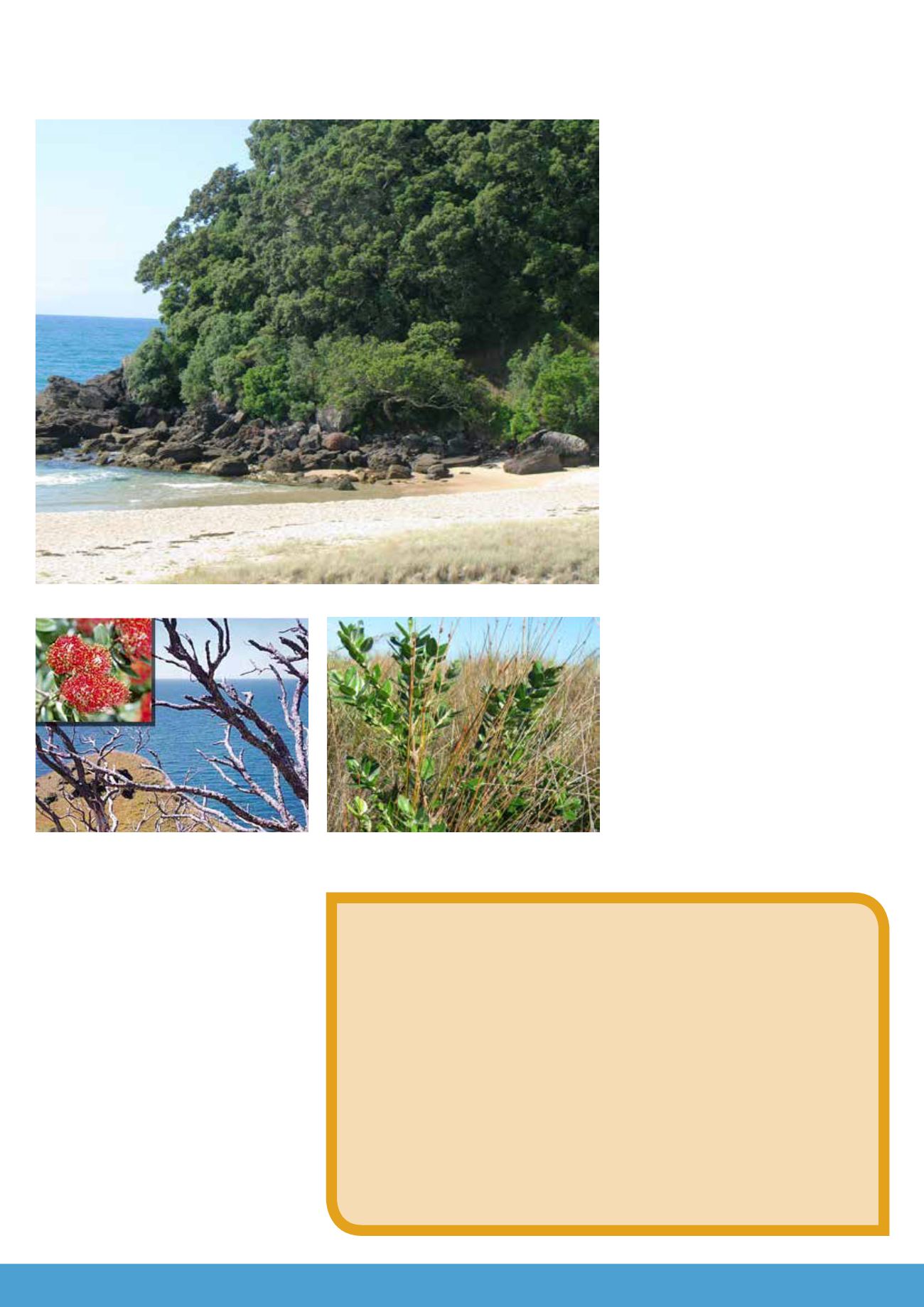
18
Pōhutukawa (Metrosideros excelsa) is one of
New Zealand’s best-known and best-loved native
trees. Endemic to this country, it is found mainly
along the coastal fringe throughout the northern
half of New Zealand. Pōhutukawa once formed
an almost continuous belt of forest around
New Zealand’s northern coast, including both
the Coromandel and west coast of the Waikato
region.
In the early days of colonisation, ship-loads
of pōhutukawa timber was exported, and
the magnificent coastal stands were severely
depleted. Fire and land clearing for settlement
and pastoral farming along the coast contributed
to the elimination of an estimated 90 per
cent of the original pōhutukawa forest (Forest
Research Institute, 1989). This decline continues
largely due to browsing damage caused by the
introduced brushtail possum. In many areas,
especially on the west coast, pōhutukawa has
disappeared entirely with no prospect of natural
replacement.
Studies have identified two peculiarities of
pōhutukawa that make it especially vulnerable
to land clearance: it’s highly sensitive to fire and
it cannot regenerate among other plants. Even
a light grass fire at the base of a tree can lead
to death. Unfortunately, fire has always been
the primary tool used by Māori and European
settlers to clear land for farming. As a result,
pōhutukawa has been virtually eliminated from
areas which lack refuges from burning, such
as rocky cliffs. In such areas, the seed needed
for regeneration had disappeared with the last
trees.
The Crimson Coast: The po- hutukawa forests of the Waikato
The possum threat
New Zealand’s surviving pōhutukawa forests
are at serious risk from the introduced
Australian brushtail possum. In its native land
the possum is up against dingos, bushfires
and less palatable vegetation, but in New
Zealand conditions are so favourable it often
breeds twice in one year. Browsing of foliage
by possums reduces tree growth, prevents
flowering, and has been responsible for the
death of a large number of pōhutukawa. Trees
in grassland or on the edge of pine plantations
are particularly vulnerable, because of the lack
of alternate food sources.
Possum control in the Waikato
Waikato Regional Council manages possums in a number of ways, including setting
Priority Possum Control Areas (PPCAs). These are areas of land that have been
identified by the council as needing possum control in order to protect and enhance
biodiversity, enhance farm production, and maintain the gains of previous or existing
possum control.
The North West Waikato PPCA is the largest in the region and comprises 17 different
areas, with the natural boundaries of the Waikato River, Tasman Sea and Raglan
Harbour. It involves the co-operation of more than 2070 landowners covering 147,000
hectares. With an estimated 200,000 to 250,000 possums killed in initial control
operations alone, it is not only the native flora and fauna that illustrates the benefit of
this landscape-based possum control. Farmers report seeing production gains because
their crops are no longer being eaten by possums.
Naturally regenerating pōhutukawa amongst
wīwī in the back-dune.
Pōhutukawa forest at Onemana.
Possum damage has caused this pōhutukawa on the
Coromandel coast to die.


